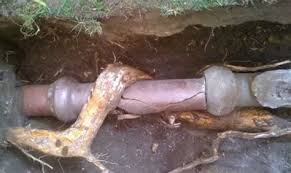Yard tree roots trees might grow really slowly, however they can still cause significant damage to your underground plumbing with their roots, and this can cost thousands of dollars in repair work costs. Continue reading to learn more about a few of the issues that tree roots wreak on your pipes, how you can avoid them, and what to do when tree root related pipes problems do occur.

Roots and Your Plumbing
Because tree roots naturally look for water and nutrients to absorb underground in order to promote tree development, tree roots frequently do grow towards underground pipes and even break into pipes. This is specifically real of trees such as willows, maples, and aspens, whose roots will grow as far as required until they reach water. Basic drain field pipes are perforated, and while this permits motion of some wastewater from the interior plumbing system to the ground, the resulting wetness can also bring in tree roots. Cracked pipelines or loose joints can likewise give water vapor that is launched into the soil, and tree roots will grow towards this too. As soon as a tree root reaches the source of the water vapor, the root will turn into the pipeline, be it through a perforation or fracture, and ultimately spread within the pipe, causing a pipe clog or split.
Residences located in areas that see very little annual rains are specifically prone to seeing these types of plumbing damage triggered by tree roots.
Avoidance
Fortunately is that plumbing damage is not inescapable, nor is it unmanageable when it does take place. In order to avoid tree root plumbing damage, it is essential to very first understand where your house’s laterals and drain cleanout pipeline lie. When in doubt, you can either call your local public works department or call the national 811 “call prior to you dig” phone number. After pipe areas are developed, one preventative action that homeowners can take is to plan their landscaping in such a way that it dissuades tree root pipeline intrusion. Homeowners can plant trees with more robust root systems further away from their pipelines, and select “pipe-friendly” trees and shrubs with a smaller root ball when planting closer to laterals. Another preventative procedure is to create a chemical barrier in between your tree’s roots and your pipes. This is done with the usage of slow-release chemicals such as copper sulfate potassium hydroxide, or with a metal or wood barrier installed underground along the beyond the sewage location. It’s likewise a great concept to have your pipelines cleaned by a professional regularly.
Upkeep
If you’re discovering gurgling or slower-than-normal drainage in your pipelines, it’s quite possible that tree roots could be ruining your pipes system. Whenever this is the case, it’s important to call a plumbing technician as soon as possible to have them check your plumbing and treat it with root-clearing chemicals if needed. In more severe situations, a plumbing technician may discover comprehensive pipeline damage and suggest having parts of your pipes system replaced completely.
